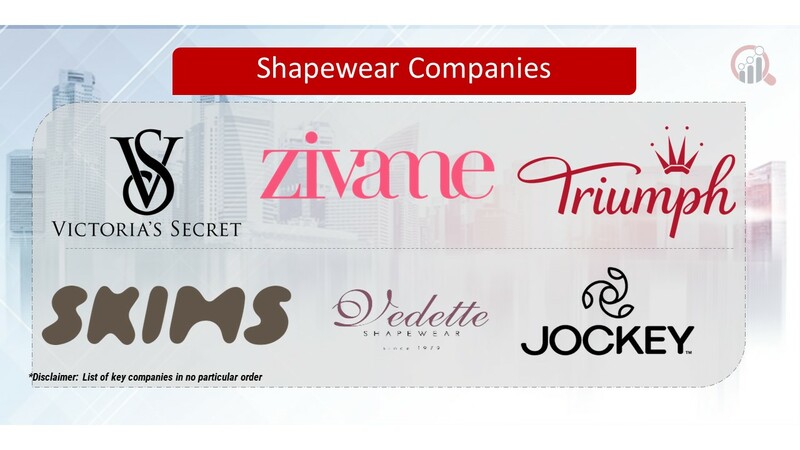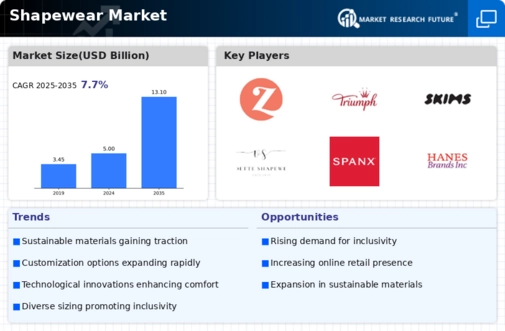Top Industry Leaders in the Shapewear Market

Market share analysis in the shapewear segment is influenced by crucial factors such as product comfort, effectiveness, and the ability to cater to diverse body types. Pricing strategies play a pivotal role, with companies offering shapewear solutions across various price points to appeal to a broad consumer spectrum. Establishing robust partnerships with retailers, both online and brick-and-mortar, is essential for market share, ensuring the availability and accessibility of shapewear products to a wide audience.
While established players dominate the shapewear market, new and emerging companies are entering the sector with innovative approaches. These entrants often focus on niche segments, sustainable materials, and inclusive sizing to differentiate themselves. The agility of these emerging companies allows them to swiftly adapt to changing consumer preferences, challenging the market dominance of established brands and contributing to the overall diversity of the market.
Industry news within the shapewear market frequently highlights advancements in fabric technologies, collaborations with fashion designers for exclusive collections, and evolving consumer trends. Companies regularly introduce new features such as seamless designs, breathable fabrics, and inclusive sizing options. Collaborations with body-positive influencers and participation in fashion events are common to enhance brand credibility and visibility. Regulatory updates related to garment standards, size inclusivity, and sustainable manufacturing practices shape industry dynamics, prompting companies to align their practices with evolving regulations.
Current trends in company investments within the shapewear market reflect a notable focus on sustainability, technology integration, and digital marketing. Companies allocate resources to source eco-friendly materials, explore sustainable production methods, and adopt responsible supply chain practices. Strategic marketing initiatives, including digital advertising, influencer partnerships, and e-commerce enhancements, are employed to strengthen brand presence and resonate with the target consumer demographic. Investments in technology, such as virtual try-on experiences and personalized fit algorithms, align with the growing demand for convenience and a tailored shopping experience.
The overall competitive scenario in the shapewear market remains dynamic, with companies navigating evolving body positivity movements, sustainability expectations, and technological advancements. Established players face the challenge of maintaining brand trust and relevance in a market where emerging companies are capitalizing on inclusive sizing and sustainable practices. The competition is expected to intensify as new entrants gain recognition, introducing innovative functionalities and challenging the market share of established brands. In this environment, adaptability, responsiveness to changing consumer preferences, and a commitment to innovation and sustainability will be crucial for companies to maintain and enhance their competitive positions in the shapewear market.
Industry News and Investment Landscape:
- Recent purchases, like Hanesbrands Inc.'s acquisition of Delta Galil, show an industry trend toward consolidation.
- A future-focused approach is indicated by increased investments in R&D, with an emphasis on cutting-edge fabrics, smart technology, and sustainable practices.
- The market is growing as a result of celebrities and body-positive influencers becoming more well-known and endorsing shapewear as a means of expression.
Key Companies in the Shapewear Market Include –
- Victoria’s Secret
- Zivame
- Triumph International
- SKIMS
- Vedette Shapewear
- Spanx
- Hanesbrands
- Jockey International
- Miraclesuit


